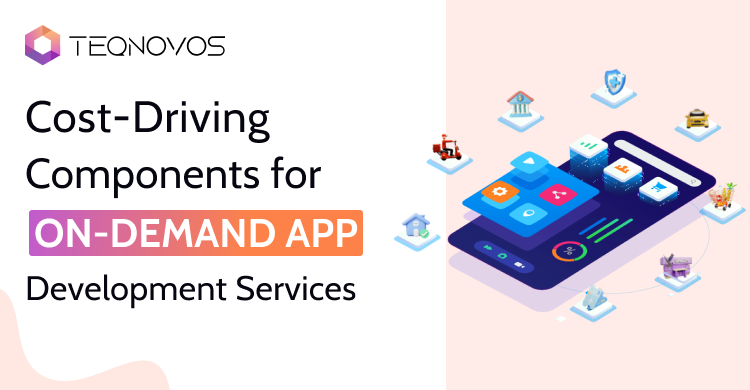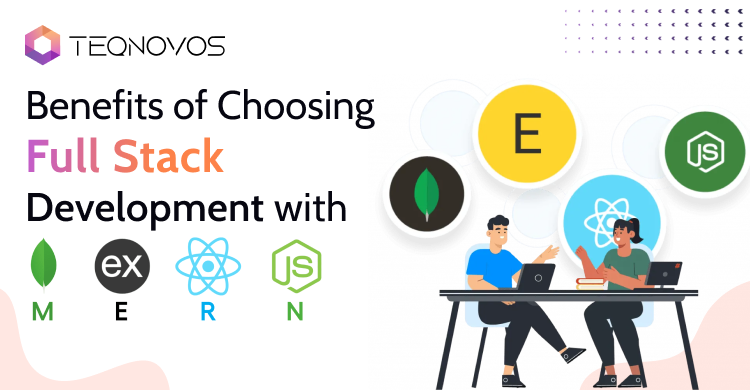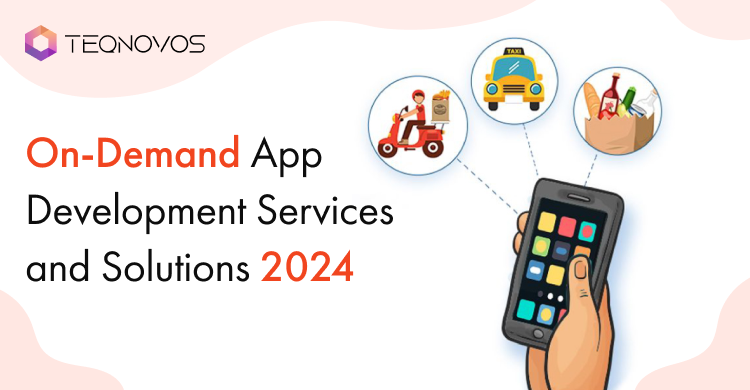How Agile Methodology Contributes to Faster Software Delivery?
The emergence of agile methodology has completely changed the landscape of software development. With Agile, it is possible to develop software in iterations while accommodating the changes in customer requirements and market conditions. Moreover, we can develop software products in a short duration and roll updates with minimum hassles.
Today, agile methodology plays a pivotal role in making the software development process dynamic. It allows us to introduce changes to the software easily and deliver an end product that satisfies both the client and the end users.
Let’s understand exactly how Agile methodology helps us to develop high-quality software products quickly.
What is Agile Methodology?
Agile methodology is an approach to managing a project effectively by breaking it down into multiple sprints. A sprint defines a fixed amount of work or objectives to be completed within a specified time range. At the end of each sprint, the development team performs an evaluation to find out if they can do anything to improve the quality of deliverables in the next sprint.
With sprints, it’s possible to develop software in multiple iterations and respond quickly to changes in the market or customer expectations. Constant collaboration with stakeholders and team members is at the heart of agile software development as it facilitates continuous feedback for improving the quality of the end product.
Agile methodology is based on 4 values and 12 principles described in the Agile Manifesto which is a document published by 17 developers in 2001.
Challenges With Traditional Software Development
Traditional software development approaches like the waterfall model and rational unified process (RUP) have many limitations that make them ineffective for producing high-quality software. These approaches lack flexibility which is essential for taking into account the change in requirements during the development process.
For instance, the waterfall model focuses on gathering all the requirements at the start of the project. The features finalized before the commencement of the project can’t be changed during the development process. Thus, you will get a product at the end of the development process exactly as planned during the conception phase.
The inability to accommodate changes or improvements in the project is due to the absence of feedback from stakeholders. Even if there’s a change in the market conditions or end-user requirements, it’s not possible to make changes to the project’s scope.
In a nutshell, traditional software development is incapable of accommodating changes in the project’s scope. Thus, there will be higher chances of developing software with features that are no longer required. This leads to a waste of time, money, and effort.
Modern software development methodologies like Agile come to the rescue by making the software development process more flexible. The iterative development makes it possible to add new features to the software without affecting the complete development process. Also, the continuous feedback from stakeholders allows the delivery of an end product that meets all their expectations.
How Agile Methodology Streamlines the Software Development Process?
The key objective of agile methodology is to make the software development process smooth and efficient. It helps to eliminate the bottlenecks and bring transparency to software development.
Today, the demands of end-users change quickly. As a product owner, you need to modify your software immediately to make sure it delivers maximum value. And for that, you should adopt a dynamic software development process. With agile methodology, it’s possible to develop software faster and make changes to it with ease.
Agile software development focuses on seamless collaboration and continuous improvement. Thus, introducing changes to a software product is easy and effective. Moreover, keeping stakeholders in the loop ensures that they are on the same page with the development team.
It’s easy to set objectives for each sprint and communicate the same with the development team. As a result, the team members will have a clear idea of what they need to achieve at the end of an iteration or sprint.
Working in iterations is what allows us to introduce feedback in the software development process. Thus, we can easily make changes to the project’s scope while keeping the software development process streamlined.
Benefits of Agile Methodology
Apart from allowing your team to develop and deploy software quickly, there are many other benefits that come with the agile methodology, and they are as follows:
- It’s easy to implement the agile methodology.
- The flexibility in the development process allows developers to introduce changes to the software easily.
- By setting objectives for each iteration, developers stay focused and give their best.
- Collaboration with stakeholders ensures complete transparency and leads to better client satisfaction.
- Agile methodology helps to deliver high-quality software that satisfies all the requirements of the stakeholders.
Primary Roles in Agile Methodology
The implementation of agile software development necessitates the creation of an agile team with less than 10 members. The idea behind the small team size is to make sure that team members collaborate with each other effectively.
There are multiple roles in an agile team to take care of the different aspects of a project. Here’s an overview of each role.
- Product Owner
A product owner is responsible for understanding all the requirements of the stakeholders and making sure that the development team builds a product that satisfies all those requirements. It is the responsibility of the product owner to ensure that the product delivers maximum value to end users. In other words, the product owner is accountable for the success of the project.
The development team and the stakeholders need to be on the same page to avoid conflict in priorities. A product owner takes input from both stakeholders and the development team and sets priorities that are in favor of the product.
- Scrum Master
The responsibility of a scrum master is to lead the development team and ensure the implementation of agile values and principles. They need to plan and execute each sprint successfully. Development teams often come across challenges and distractions that they overcome with the help of the scrum master.
Apart from leading the development team, the scrum master in an agile team also helps the product owner to define the value that they expect from the development team. They bridge the gap between the product owner and the development team. Whether the product owner has some requests for the dev team or vice versa, they mediate through the scrum master.
- Development Team
The members of the development team are the ones taking care of the project work. They have different technical skills required to build the software. Within the development team, there are professionals with different roles, such as designers, programmers, and QA engineers.
The members of the development team organize themselves and deliver the required work during sprints. Whenever there is a bottleneck in the development process, they are free to approach the scrum master for professional assistance. It’s the job of the development team to meet deadlines and ensure the quality of the deliverables.
Stages in Agile Development Life Cycle
Agile software development addresses the rapidly changing customer demands and helps to meet them effectively. Iterative development is at the core of the agile methodology which makes it possible to develop software quickly and delight both stakeholders and the end users of the software.
There are 6 stages in the Agile development life cycle that a project goes through, and they are as follows:
1. Concept
In this stage, product owners and stakeholders outline the scope and objectives of the project. They come together to discuss all the requirements of the project. While stakeholders share their idea and expectations, the product owner will do a thorough analysis to determine the feasibility of the project. The product owner is also responsible for estimating the time and cost of the project so that stakeholders can decide if they should proceed with the project.
2. Inception
During the inception stage, the product owner builds an agile team based on the project requirements and the availability of resources. Picking the right people is critical for the success of the project. After finishing the team members, the next step involves the creation of the software architecture and a mock-up for the UI design. Shareholders review both the architecture and mock-up to share feedback and modify project requirements if necessary.
3. Production (Iteration)
The product stage is where the actual development process begins. The development team, under the expert guidance of the scrum master, works in iterations to turn the UI and UX design into code. Each iteration is followed by feedback from stakeholders and team members to improve the quality of the deliverables in the next iteration.
Testing is performed regularly to ensure the product meets the desired quality standard. The production stage is the longest and involves the active participation of the agile team as well as stakeholders.
4. Release
In this stage, the QA engineers test the product to ensure it works as expected. If the product passes all the tests, it is processed further for deployment in the production environment. On the other hand, if the QA engineers find any bugs, developers eliminate them quickly.
5. Maintenance
Once the software is live and available to end users, the agile team provides dedicated support to ensure the product runs smoothly after the release. The maintenance stage involves constant monitoring of the software to detect and eliminate potential problems. It is also during this stage that developers update the software with new features.
6. Retirement
This is the final stage of the Agile software development life cycle where the product is retired. Generally, stakeholders decide to retire a product because either it has become outdated and no longer required by the business or a new product is going to replace it. The end users are notified beforehand so that they can export their data or migrate to the new system.
Wrapping it All Up
The popularity of Agile methodology has increased significantly in recent years due to its ability to produce high-quality software products in less time. It has proved itself as a great alternative to traditional software development methodologies like waterfall. The biggest advantage of agile is that it involves feedback from the stakeholders throughout the development process, thus allowing developers to evolve the product according to the changing requirements.
While you plan to use Agile methodology for your next project, you need an Agile team that consists of a product owner, a scrum master, and developers. Also, it’s important to get familiar with all 6 stages of the Agile development lifecycle and make sure you plan each stage carefully.
The most difficult part of implementing Agile software development is the formation of the Agile team. You may not have the right people in your organization to form an agile team. However, there’s no need to worry as Teqnovos helps you build an agile team for your organization. We help you hire the most talented developers who have an in-depth understanding of all the Agile values and principles.
















